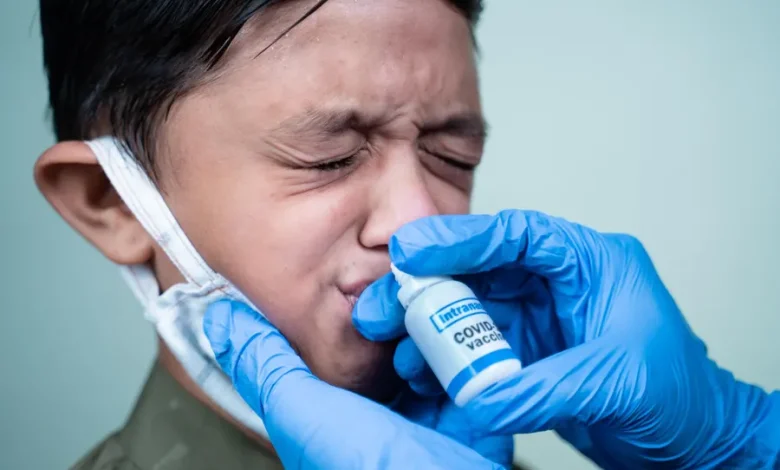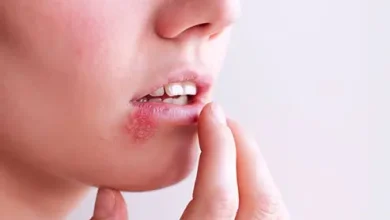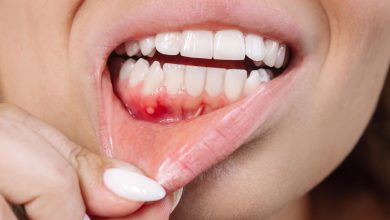The Surprising Role of Nasal Sprays in Fighting Coronavirus and Other Viruses

The COVID-19 pandemic has transformed the way we think about health, hygiene, and disease prevention. For years, masks, vaccines, and hand sanitisers have been at the centre of global conversations. Yet, another tool in the fight against respiratory viruses has been quietly gaining attention: nasal sprays. These small bottles, often overlooked on pharmacy shelves, may play a bigger role in stopping viruses than many realise.
How nasal sprays work, their potential in reducing viral infections like coronavirus, the types available, ongoing research, and what the future might hold.
Why the Nose Matters in Viral Infections
To understand the importance of nasal sprays, we need to look at how respiratory viruses, including SARS-CoV-2 (the virus that causes COVID-19), enter the body.
- First Line of Contact
The nose is often the first gateway for pathogens. When someone breathes in viral particles, they are trapped by the mucous membranes lining the nasal passages. - Viral Replication Zone
Many viruses replicate quickly in the nose and throat. With SARS-CoV-2, research has shown that the virus can multiply extensively in the nasal cavity before spreading deeper into the lungs. - Transmission Hub
Sneezing, coughing, or even speaking can expel virus-laden droplets from the nose and mouth, making the nasal cavity a key site for transmission.
This makes the nose not just a passive pathway but a critical battleground in viral defence. If viral load can be reduced here, both infection severity and transmission risk might be lowered.
What Are Nasal Sprays?
Nasal sprays are liquid solutions designed to be sprayed directly into the nasal passages. They are widely used for allergies, congestion, and dry nasal passages, but their scope is expanding into antiviral defence.
There are several types of nasal sprays:
- Saline Sprays – Simple saltwater solutions that rinse out allergens, mucus, and pathogens.
- Steroid Sprays – Used for chronic inflammation and allergies.
- Decongestant Sprays – Provide short-term relief by shrinking swollen nasal tissues.
- Antiseptic or Antiviral Sprays – Contain agents that can kill or deactivate viruses.
- Barrier Sprays – Form protective films inside the nose to block pathogens.
The potential of nasal sprays against viruses lies primarily in saline, antiseptic, and antiviral formulations.
The Science: How Nasal Sprays Fight Viruses
Different nasal sprays act in different ways, but several mechanisms make them promising in viral prevention and management:
- Mechanical Cleansing
Saline sprays physically wash away viruses, allergens, and irritants. This reduces viral concentration in the nose before it can spread further. - Maintaining Moisture
Dry nasal passages are more prone to micro-tears, making viral entry easier. Sprays keep mucous membranes hydrated and resilient. - Direct Antiviral Action
Some sprays contain ingredients like povidone-iodine, xylitol, or carrageenan (from seaweed) that have been shown to inactivate viruses. - Barrier Formation
Certain formulations create a protective coating inside the nasal cavity, blocking viral particles from attaching to cells. - Immune Support
Some sprays are being designed to deliver immune-boosting agents or even vaccines directly through the nose, taking advantage of mucosal immunity.
Nasal Sprays and Coronavirus: What Research Shows
The role of nasal sprays in fighting COVID-19 has been studied since the early months of the pandemic. While vaccines and antivirals remain the primary defences, nasal sprays are being explored as complementary tools.
1. Saline Nasal Irrigation
Several studies suggest that simple saline rinses can reduce the severity of upper respiratory infections. During COVID-19, some trials showed that patients who used saline sprays had lower viral loads and shorter illness durations compared to those who didn’t.
2. Povidone-Iodine (PVP-I) Sprays
PVP-I, a common antiseptic, has demonstrated strong antiviral effects against SARS-CoV-2 in lab studies. Clinical trials have tested diluted PVP-I nasal sprays and rinses, showing they can reduce viral presence in the nose. However, safety concerns mean more studies are needed before recommending widespread use.
3. Carrageenan-Based Sprays
Carrageenan, derived from red seaweed, is included in some over-the-counter nasal sprays. Research indicates it can trap viruses and prevent them from entering cells. Clinical trials found that carrageenan nasal sprays reduced infection rates and shortened cold symptoms, including those caused by coronaviruses.
4. Nitric Oxide Nasal Sprays
Nitric oxide (NO) has antiviral and antimicrobial properties. Some trials during COVID-19 tested NO-based nasal sprays, showing they reduced viral load in infected individuals. These sprays are being investigated for emergency use in outbreaks.
5. Vaccine Nasal Sprays
Although different from over-the-counter sprays, nasal vaccine sprays are also being developed. Unlike injections, nasal vaccines stimulate mucosal immunity right at the viral entry point, potentially providing stronger defence against respiratory viruses.
Beyond COVID-19: Nasal Sprays and Other Viruses
Nasal sprays are not just useful against coronavirus—they may offer protection against a range of respiratory pathogens:
- Common Cold Viruses (Rhinoviruses, Seasonal Coronaviruses)
Studies suggest saline and carrageenan sprays can shorten the duration of colds. - Influenza (Flu)
Nasal vaccines, like FluMist, have been used for years to provide immunity against influenza. Research into antiviral sprays continues. - RSV (Respiratory Syncytial Virus)
Trials are underway to develop nasal vaccines and sprays that reduce RSV spread, especially in infants and vulnerable adults. - Other Emerging Viruses
Because nasal sprays act at the entry point of most respiratory viruses, they may be adapted to help in future pandemics.
Benefits of Nasal Sprays in Viral Defence
Why might nasal sprays be a valuable addition to public health strategies?
- Non-Invasive – Easy to use, no needles required.
- Accessible – Many sprays are affordable and available without prescription.
- Safe – Most saline and barrier sprays have few side effects.
- Complementary – Can be used alongside masks, vaccines, and hand hygiene.
- Rapid Action – Sprays act directly where viruses enter.
Limitations and Concerns
While promising, nasal sprays are not a magic bullet. Some limitations include:
- Short-Term Effect – Many sprays need frequent reapplication.
- Variability in Evidence – Not all clinical studies show strong results.
- Safety Issues – Overuse of decongestants can damage nasal tissue; antiseptic sprays must be carefully formulated.
- Not a Substitute for Vaccines – Sprays can reduce risk but do not replace the systemic protection of vaccination.
The Future of Nasal Sprays in Medicine
The pandemic has accelerated interest in nasal sprays as tools against viral diseases. Future directions may include:
- Antiviral Nasal Sprays as Preventive Tools – Carried like hand sanitiser and used before crowded events.
- Mucosal Vaccines – Nasal vaccines for COVID-19, flu, and RSV could become mainstream.
- Customised Formulations – Sprays targeting specific viruses or boosting mucosal immunity.
- Combination Therapies – Sprays combined with oral antivirals or supplements for stronger protection.
Practical Advice: Should You Use Nasal Sprays?
For the average person, saline sprays are safe and useful for maintaining nasal health. They may help reduce viral load and relieve congestion. Carrageenan sprays are available in some countries and may provide additional protection.
However, antiseptic sprays like povidone-iodine or nitric oxide should only be used under medical guidance, as more research is needed on long-term safety.
Always consult a healthcare professional before starting any new preventive or therapeutic spray, especially if you have chronic conditions, are pregnant, or are using other medications.
Conclusion
The COVID-19 pandemic has taught us that the nose is more than just a breathing passage—it is a frontline in our defence against viruses. Nasal sprays, once considered minor remedies for congestion, are emerging as valuable tools in reducing viral load, easing symptoms, and even preventing infection.
While they cannot replace vaccines, masks, or hand hygiene, nasal sprays could become an important part of our toolkit against coronavirus and future viral threats. Their surprising role highlights a broader truth in medicine: sometimes, the simplest solutions—like a spray of saline—can make a big difference.
As research continues, one thing is clear: the humble nasal spray may be more powerful than we ever imagined.




